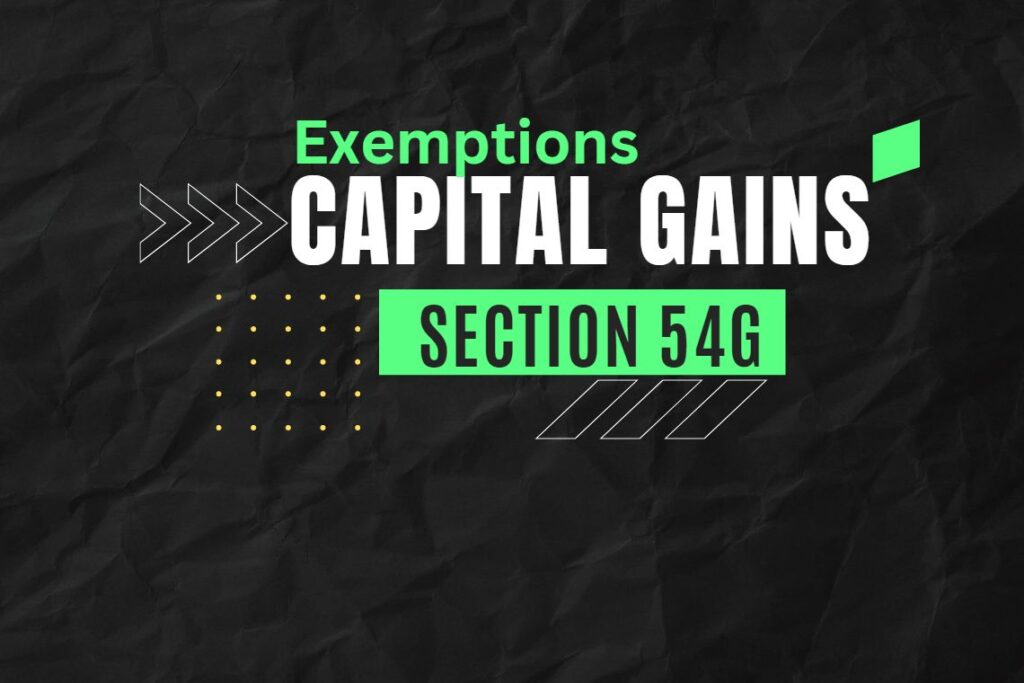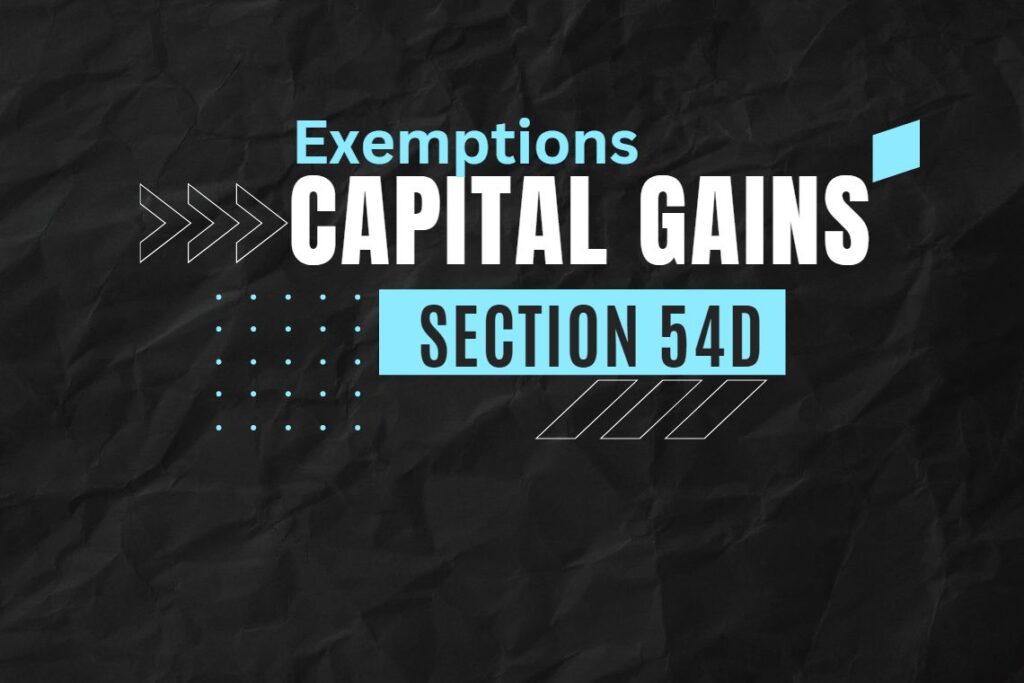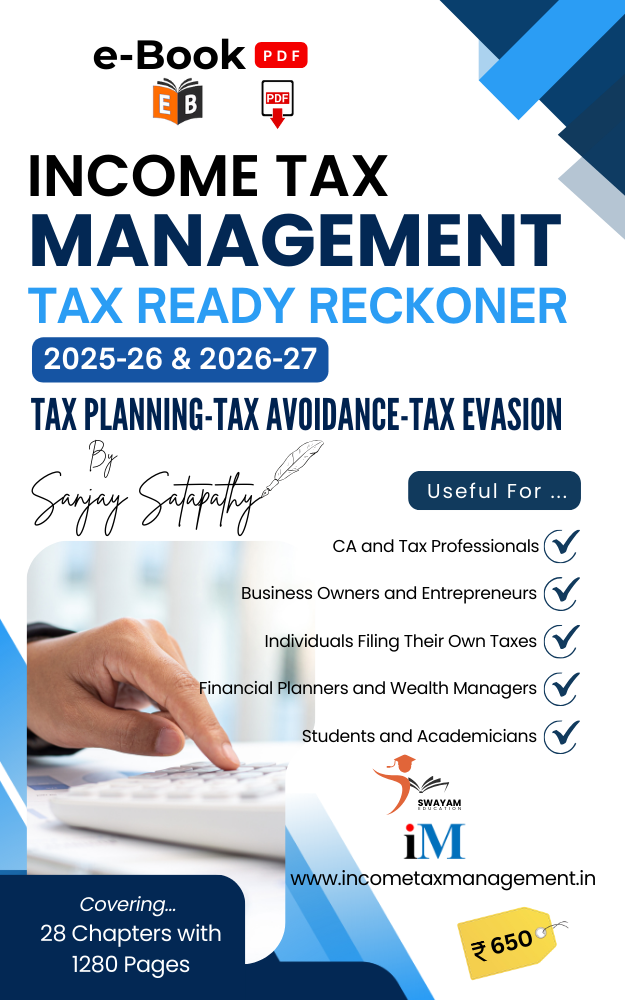The Capital Gains Accounts Scheme (CGAS) 1988 is a scheme under the Income Tax Act, 1961, in India. It is designed to help taxpayers avail tax benefits on capital gains arising from the sale of assets like real estate or certain financial assets.
[Notification No. GSR 724(E), dated 22-6-1988 reported in 172 ITR (St.) 54]
- Under the Capital Gains Accounts Scheme, 1988, “depositor” is defined to mean an assessee who is eligible to make a deposit under sections 54, 54B, 54D, 54F or 54G of the Income-tax Act, 1961.
- “Deposit Office” means the bank notified by the Central Government to receive deposit and maintain account of the depositor. For notified bank, See Notification No. GSR 725(E), dated 22-6- 1988 reported in 172 ITR (ST.) 74.
- Every depositor who is desirous of opening account(s) for the first time, shall apply to the deposit office in Form A in duplicate together with the amount of deposit to be paid either in cash or by crossed cheque or by draft. Such deposit can be made in one lump sum or in instalments at any time on or before the due date of furnishing the return of income. For availing benefit of exemption from capital gains under more than one section, depositor has to make separate applications for opening accounts under each of such sections. There are two types of deposit accounts (1) “Deposit account-A” in the form of ‘saving deposit’, and (2) “Deposit account-B” in the form of “term deposit” with an option to keep the deposit as cumulative or non-cumulative. A depositor has an option to open any of these accounts or both. Nomination in respect of an account can be made by the depositor, who is an individual, in Form E. For the deposit under account-A, deposit office will issue passbook. For the deposit under account-B, deposit office will issue a deposit receipt.
- For the deposit made under account-A, interest at the rate of specified by the Reserve Bank of India will be allowed for each calendar month on the lowest balance between the close of 10th day and end of the month and credited to the account at the end of each half-year. For the deposit made under account-B, interest at the rate specified by the Reserve Bank of India will be allowed.
- A depositor having a deposit in account-B can convert the said account into account-A by applying in Form B. Account can be transferred from one branch to another branch of the same bank.
- Application in Form C has to be made in respect of first withdrawal from account-A and for subsequent withdrawals from the said account in Form D in duplicate stating therein the manner and extent of utilisation of the amount of immediately preceding withdrawal. The amount so withdrawn has to be utilised by the depositor, within 60 days from the date of withdrawal, for the purposes specified in section 54, or 54B or 54D or 54F or 54G. The amount which has not been so utilised is to be re-deposited in account-A immediately thereafter. Similarly, withdrawal from account-B will also be allowed provided the depositor has converted the said account into account-A.
- For closure of account, an application has to be made, with the approval of the Assessing Officer, to the deposit office in Form G. Similarly nominee or legal heir also can close the account of the deceased depositor by applying in Form H.
Features of the Capital Gains Accounts Scheme 1988
Here are some Summary of Salient features of the Capital Gains Accounts Scheme 1988:
- Objective: The primary objective of CGAS is to provide a mechanism for taxpayers to park their capital gains temporarily in specified accounts to claim tax benefits while ensuring that they eventually reinvest the proceeds in eligible assets.
- Types of Accounts: Under CGAS, there are two types of accounts:
Type A Account: This account is for deposits in the form of savings accounts, recurring deposits, or fixed deposits. The deposited amount can be withdrawn without restrictions.
Type B Account: This account is for the purpose of investing in specific assets like purchasing or constructing a residential property. Withdrawals from this account are subject to certain conditions and restrictions.
- Time Limit: Taxpayers must deposit the capital gains in a CGAS account before the due date of filing their income tax return for the financial year in which the capital gains arise.
- Use of Funds (Type B Account): Funds deposited in a Type B Account can be utilized for the acquisition or construction of a residential property within a specified time frame. The property should be acquired within two years of the deposit or constructed within three years of the deposit.
- Withdrawals from CGAS: Withdrawals from a CGAS account can only be made for the specified purpose (e.g., purchasing a residential property). If the deposited amount is not used for the intended purpose, it will be treated as capital gains in the year in which the time limit expires.
- Interest on Deposits: The accounts under CGAS may earn interest, and this interest income is taxable. However, the account holder has the option to choose whether to include the interest income in their taxable income for the year of deposit or maturity.
- Transfer of Accounts: Account holders can transfer their CGAS accounts from one authorized bank or post office to another.
- Nomination: Account holders can nominate a person to receive the deposit in case of their demise.
- Joint Accounts: Joint accounts are allowed under CGAS, and the rules regarding withdrawals and taxation may vary depending on the type of joint account.
- Tax Benefits: Deposits made in a CGAS account allow taxpayers to claim exemptions from capital gains tax under specified sections of the Income Tax Act. For example, if the capital gains are invested in a Type B Account and used for purchasing a residential property, the gains are exempt from taxation.
It’s important to note that the rules and provisions of the Capital Gains Accounts Scheme 1988 may change over time. Therefore, individuals looking to avail of its benefits should consult with a tax professional or refer to the latest tax regulations to ensure compliance with current rules and requirements.












